A strange hybrid beast is rising from the dust in the mountains West of Kabul. The foreigners in Kabul call it the Sandhurst in the Sand. Those who work at the new British-led military school that welcomed its first cadets last week prefer the more cumbersome “ANA-OA” short for Afghan National Army Officers Academy (though the Australians who guard the place call it “Duntroon in the Desert” after their own Sandhurst equivalent.)
Whichever name sticks, the “Afghan Sandhurst” at Qargha will be the only significant British contribution to Afghanistan’s security after the NATO mission finishes at the end of 2014, though if all goes well it might be the most lasting.
Some see this “Kabuli Camberley” as a way of making up for what they see as the costly mistakes of the last 12 years, beginning with the decision to take responsibility for Helmand, the Afghan province with the deepest historical hatred for Britain, closely followed by the deployment there of a too small military force, commanded by apparently overconfident generals.
And with boasts about British brilliance at counter-insurgency sounding hollow after a decade of failure, the new academy presents an opportunity to engage in one of the military tasks at which British forces have always been genuinely good at, and are still recognized by Britain’s allies as being so.
In any case the academy represents a remarkable, radical experiment in social engineering — and at the same time an unconscious throwback to the some of Britain’s more successful and enduring imperial enterprises.
At this point, the academy does not look like much. The actual buildings are behind schedule so temporary barracks and classrooms have had to be constructed out of tents and shipping containers on a scrubby, dusty plateau strewn with building sites and abandoned Soviet vehicles.
It’s an area that has been used for military training since even before the Soviet invasion; one British journalist even remembers al Qaeda operatives being trained here during the civil war.
The “Afghan Sandhurst” as Afghan officials are proud to call it, is on the site of a bigger project – an “Afghan National Defence University” that will eventually include a Sergeants’ Academy, a Staff College and a Counter-Insurgency School, assuming of course that President Obama and his successors continue to pay Afghanistan’s military bills after 2014.
[There is already a National Military Academy on the campus – a four year college built by the Americans and modeled on West Point. While the Afghan Sandhurst has been set up specifically to train junior officers to lead platoons and companies in infantry combat, the American-founded “NMA” focuses on training engineers, logisticians and artillerymen.]
The whole idea of an Afghan Sandhurst is the dreamchild not of the British government but Afghanistan’s formidable chief of General Staff, Gen. Sher Mohamed Karimi, who attended Sandhurst from 1966-8, and who is said to be in the habit of telling people that if he had an army led by his fellow cadets, the war against the Taliban would be over.
Karimi’s Anglophile memories and desires have borne fruit. There’s a particular kind of military Britishness apparent in the compact neatness of the rows of tents and containers that will serve as the physical structure of the academy until the buildings are completed.
It’s also there in the solid commitment to continue the mentoring mission until 2023, so that the Sandhurst-inspired ethos and systems really bed in. The Americans, on the other hand, have all but abandoned their recently opened Afghan West Point, with dubious results.
Most of all it is there in the general bearing of the 180 odd Britons on the faculty. (The 70 non-British foreign staff all come from countries whose militaries have strong connections to the UK like Australia, New Zealand, Norway and Denmark).
Both the Regimental Quartermaster, responsible for building and equipping the academy’s tented facilities, and the Regimental Sergeant Major, who keeps everything running, are straight out of central casting. Tall, fit, formidably crisp, with voices that carry over the entire campus, everything from their salutes to the pressed perfection of their uniforms proclaims discipline and demands emulation. And the Afghan NCOs whom they have been mentoring, some of whom have been sent to Sandhurst itself for training, do seem suitably impressed. Although these days Afghan army troops are generally more professional looking than they were a few years ago, those who are teaching at the academy look like they might be auditioning for sentry duty at Windsor Castle.
Of course the Afghan faculty members here. whether Tajik, Pashtun or Hazara, are hardly typical ANA soldiers. The Commandant, Brig. Sharif was trained by the Soviet army and later studied at the Indian Staff College. His deputy, Lt Col Hussein attended the UK’s Staff College at Shrivenham and his chief of staff Lt Col Mangal went to both Sandhurst and Staff College in the UK. Others have been trained in Germany or the United States. They exude an almost painful professionalism and eagerness.
If at times you could be forgiven for thinking yourself at an Indian Military Academy at Dehra Doon or Quetta in the mid 1940s, there are few of the comforts here that cushioned life for British officers in India, nor any of the opportunities for family and social life. Indeed, both military and civilian instructors are near prisoners of the academy. Unlike Afghan staff and even the cadets they are bound by safety and security rules so restrictive that trips to the monuments or restaurants of Kabul are essentially impossible.
There is also none of the condescension or racial arrogance you might have found in a Raj-era military academy. “Shohna ba Shohna” – or “shoulder to shoulder” has been the watchword of all the training and mentoring efforts in Afghanistan. Many of the British trainers have actually fought alongside Afghan troops and have respect for their physical courage. That doesn’t mean they are naïve about the size of the task that lies ahead. Arguably the big difference between this project and so many others that Britain and her allies have embarked on here is that it is informed by 12 years of intense and sometimes bitter experience.
You can see this in the way the British have set up the selection process for the academy. It is designed specifically to guard against the political interference, nepotism and corruption that infect so much of Afghan life. All the candidates are given a coloured, numbered bib when they come for three days of anonymous physical, mental and aptitude testing. At some point during the three days of assessment by a multi-ethnic three-man selection board the bib and number are switched again.
Of course the board members can tell the ethnicity of a candidate by his features or his accent, but there is no way of finding out who he is, as the only person in the entire establishment with access to the actual names of the candidates is a British lieutenant colonel. What this means is that no matter how hard a politician, general, tribal leader or warlord leans on the academy’s staff to favour a son or cousin or well-connected princeling, they could not help even if they wanted to.
No one here has more affection and respect for his Afghan colleagues and students than the British officer responsible for setting up the Sandhurst in the Sand. Brigadier Maurice Sheen, a former Colonel-Commandant of the Royal Logistics Corps, was brought out of retirement by the UK MOD specifically to do this job. As he cheerfully points out, “being an old bloke has its advantages here,” Afghan society being one that venerates age to an extraordinary degree.
The sort of commander who knows the names and backgrounds of even the lowliest kitchen worker on his staff, Sheen has an avuncular, schoolmasterly air, and was in fact once a public school housemaster. He also has the unique qualification of having re-established Iraq’s military academy in Rustamiyah in 2005-6.
That original “Sandhurst in the Sand” (founded by the British in 1927) was one of the relative successes of the Coalition mission in Iraq. Sheen himself was famous for singlehandedly defusing an incipient battle there between mutinous Shiite troops and the academy’s quick reaction force. He was so admired by the US general in charge of the allied training mission that he pleaded unsuccessfully with London to allow him to stay on after his term was over. That general, Martin Dempsey, is now America’s Chief of General Staff, a useful ally for any coalition commander to have when it comes to negotiating for resources with either ISAF or the Afghan MOD.
Sheen dislikes the sobriquet “Sandhurst in the Sand,” partly because it is second hand, but mostly because because, (he says), they are not trying to reproduce Sandhurst but to create an Afghan hybrid designed for the needs of the Afghan army and reflecting Afghanistan’s own military traditions and style.
Some of this takes a bit of getting used to for the British trainers. For instance, although there won’t be nearly the amount of drill required of Sandhurst cadets, what there is will see the Afghans marching with their traditional Soviet-style goose step, and holding hands in order to keep in time.
Apparently the fitness requirements of the training comes as a particular shock to Afghan officer candidates, even those who come from the Afghan army. Despite the proliferation of bodybuilding gyms in Kabul, and popular admiration for the country’s increasingly successful sports teams, a concern for physical fitness is relatively new to the culture, and the notion that officers must be fitter than the men they lead is even more alien.
You do hear skepticism about the project from some British soldiers here who served in Helmand and who witnessed the Afghan Security Forces and government officials at their lazy, corrupt and abusive worst. They tell stories of senior officers humiliated by junior ones with higher tribal status, of commanders who rape more junior stories and of good leaders replaced by well-connected incompetents.
Sheen and his colleagues are quick to remind sceptics – and their Afghan colleagues – that meritocratic promotions are relatively recent developments in the Britain, that until the late 19th century you could buy a regimental command and that even more recently, top jobs tended to go to to the socially grand or the sons of senior officers. They also point out that many of the cadets will come from regions of Afghanistan, and from families very different from those that British troops encountered in Helmand.
Sheen seems particularly keen that the foreign trainers respect the Afghan tradition according to which a commander is the father of his men, and is therefore as likely to be approached by a private asking for more leave as by a senior staff officer with a question about logistics. There is a certain romantic appeal to that kind of paternal leadership but a lot of coalition officers think it’s a bad thing. After all, it’s all very well for a warlord’s band to operate like an extended family but in a modern army commanders need to be able to delegate decisions to more junior ones.
And for all the talk about Afghan solutions and going with the grain of the country, the British mentors here are determined to introduce here what must seem one of the most bizarre and unsettling aspects of Western military culture, namely the training of officer cadets by their social and educational inferiors.
At the real Sandhurst, and in countries like America and France it is simply taken for granted that officer cadets should be trained — and hence be shouted at –by sergeants and other non-commissioned officers. That is a hard sell here in Afghanistan, because in the Afghan military as in many third world and former Eastern block armies, NCO’s are given low status and little responsibility. But if officer cadets here get used to it, and start thinking of sergeants as experts worthy of respect, it could change the way the Afghan army fights. Of course, that in itself assumes that the new breed of officers that will come out of the Afghan Sandhurst, with their eccentric British ways, will be accepted and flourish in the 350,000 strong Afghan armed forces.
Another big question that hangs over the entire enterprise is the level of quality it would be right to expect of staff, officer candidates and their training. Here in Afghanistan you often hear ISAF troops use the phrase “Afghan good-enough” to refer to a standard of performance that is merely the best that can be hoped for.
Sheen and his colleagues are hoping to strike a balance between the low expectations implied by “Afghan good-enough” and the standards required of a first world officer corps. They stress that cadets here don’t have to be trained for the variety of missions that Sandhurst cadets are trained for. They just have to be ready to lead troops in combat after 42 weeks, having been transformed from men and women who once identified as members of tribal and family groups to believers in multi-ethnic Afghanistan. The curriculum therefore includes considerable time spent on core values and military history, the latter taught by Sandhurst’s own Prof. Duncan Anderson with a suitable emphasis on Afghan victories against the British, Russians, and classes in the former using the Koran to back up notions like an officer’s duty to serve as well as lead his men.
In some ways the academy may not be as big a gamble as it might look from London. Afghanistan is after all a very different society than it was when British troops first arrived in force a decade ago. There are now 2.5 million internet users, 76 television channels and 20 million people with mobile phones. The culture and economy have been enriched by the return of more than 5 million former exiles, and of course by the billions of dollars of foreign aid. Most important the academy will be recruiting its cadets from a bigger, younger much better-educated population than existed here even a few years ago.
If it all works it will mean the creation of a genuinely meritocratic, genuinely national institution that produces leaders with integrity and self-discipline. That alone would be a revolutionary development in this part of the world.
Of course, success could bring problems of its own. There are after all several third-world countries in which the army is the only institution in which a young man without money or connections, and burdened by membership of an oppressed ethnic minority can rise to the top thanks to his talent. Prominent among them are Pakistan, Guatemala, Panama and Venezuela – all states in which generals from such backgrounds have at various points established military regimes, some of them very nasty indeed.
On the other hand, despite all that has been invested by the West in building a democratic and independent Afghanistan, it could be argued that there are worse futures for this country than domination by a relatively modern, efficient, meritocratic military led by graduates shaped by an institution whose motto is “serve to lead.”
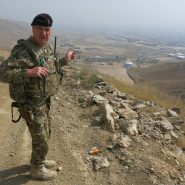
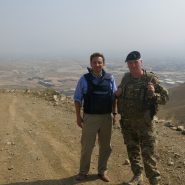
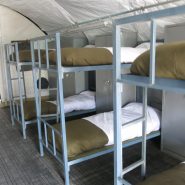
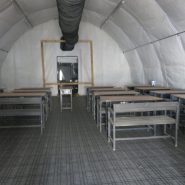
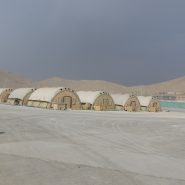
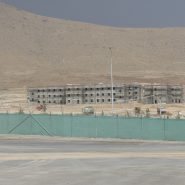
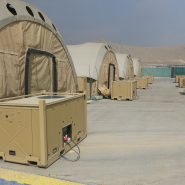

America cares for its veterans; we betray ours (The Sunday Times Nov.11, 2013)
The lack of support for retired soldiers shames us and must change
This is a country in which private charities have to make up for the failure of the state to ensure that limbless servicemen and women have access to decent rehabilitation facilities, and in which families looking after catastrophically wounded, bedbound young fathers, husbands and sons are left to fend for themselves.
It is telling that both the present and previous governments have been so oblivious to the price paid by wounded service people and their families that they failed to budget for the 24-hour care that hundreds of severely injured soldiers and marines will need for the rest of their lives.
Soon civilian society will have to absorb waves of newly redundant veterans, many of whom will need help and training if they are to lead productive, prosperous and fulfilling lives. Their participation in war and their emergence into civilian life when the economy is still fragile makes them all too vulnerable to post-traumatic stress disorder.
It does not have to be this way. The next government could and should offer Britain’s warriors a new and better deal.
It could begin by copying the best of America’s GI bill. This gives war veterans — or their families if they are killed or severely disabled — an array of educational and other benefits that not only keeps them off the breadline but gives them a real chance to make a good life.
The GI bill dates to 1944, when the Servicemen’s Readjustment Act offered every US veteran who had been on active duty money for education, low-cost business loans and subsidised mortgages.
More than 8m servicemen took advantage of the GI bill and went into university or technical education. Their skills gave a huge boost to the US economy in the 1950s and 1960s.
American veterans also have access to a Department of Veterans Affairs. The VA, as it is known, has hospitals, clinics and benefits centres around the US. It was founded in 1930 but expanded to deal with the 15m American veterans of the Second World War. After the withdrawal from Vietnam, the US shifted from a conscripted military to smaller, all-volunteer armed forces. But there have been sufficient veterans from the conscription era and subsequent conflicts to ensure that the VA’s facilities have always been well used.
The American GI bill still provides both vocational and academic training and subsistence allowance for service people who are in full-time education. It also pays for counselling and employment assistance for veterans with disabilities.
Today the VA system has care homes and jobcentres and even ensures that old soldiers get a decent burial — a benefit that is all too often denied their British comrades.
Although American veterans rightly complain about the quality of some VA hospitals, and the often slow and inefficient bureaucracy that administers their benefits, what those institutions offer men and women who have served their country still puts Britain to shame. And no one in America, not even on the hard left, begrudges American veterans the billions that are spent on them.
There is no reason Britain could not provide equivalent or superior opportunities to those who come out of our proportionally much smaller armed forces. Yes, it would cost money to offer education benefits and business loans, but both of these are investments in Britain’s future and cost less than dealing with homelessness, addiction, suicide and other problems that disproportionately affect veterans. It would not cost anything for veterans to be given preference in the queue for public housing, or in hiring for jobs in the public sector.
Indeed, a hiring preference for veterans could transform many public sector institutions for the better. Imagine, for example, what it would mean for the British police if they recruited large numbers of hard-working, public-spirited, mentally and physically tough people who were used to putting the safety of others above their own.
Our failure to make use of the unique skills of servicemen and women, including their technical capabilities and their experience of work that requires responsibility, initiative and leadership at a young age, damages us as much as it does them. And when our highly trained veterans end up stacking shelves or on the streets, it represents both a moral failure and a waste of human capital.
The motto of America’s veterans system is a quote from Abraham Lincoln: ‘To care for him who shall have borne the battle, and for his widow and his orphan’. This is a hallmark of a decent society, one that respects sacrifice and repays its debts.
A British version of the GI bill would demonstrate better than any parade or poppy drive — valuable and inspiring though they are — that we genuinely respect and are grateful to those who have risked or lost limb and life in our name.
http://www.thesundaytimes.co.uk/sto/comment/regulars/guestcolumn/article1338115.ece